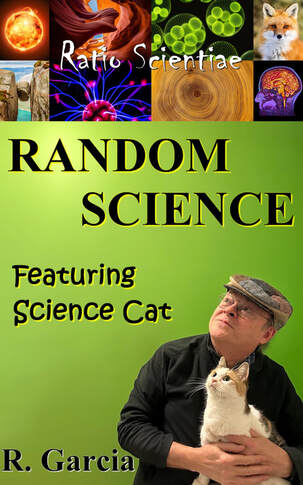
I want to invite you to join us in a voyage of discovery. We will set out on a trek to explore the science lying inside the nooks and crannies of reality. From an infinite stack of books, a levitating light bulb, and an augmented reality sandbox, to illusions, cicadas, squirrels in attics, and new ways to make sounds or drink water with your hands. This book has that and more including 100 images and 200 links to websites, posts, articles, and videos.
This book also features a very special cat that has become the mascot of my website, ratioscientiae.com, and which appears here under her professional name, Science Cat, showcasing the science behind her eyes, whiskers, and murder mittens, and demonstrating cat jumping, cat tail wagging, and the seasons, as well as revealing some amazing science facts.
So climb aboard with Science Cat and me and explore the wonders of Random Science!
My book is available on Amazon as an e-book. Please click here.
This book also features a very special cat that has become the mascot of my website, ratioscientiae.com, and which appears here under her professional name, Science Cat, showcasing the science behind her eyes, whiskers, and murder mittens, and demonstrating cat jumping, cat tail wagging, and the seasons, as well as revealing some amazing science facts.
So climb aboard with Science Cat and me and explore the wonders of Random Science!
My book is available on Amazon as an e-book. Please click here.